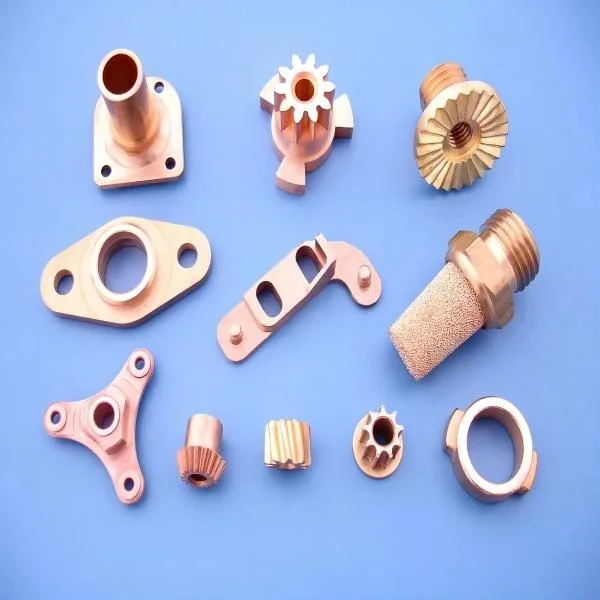Powder metallurgy (PM) is a fascinating and versatile manufacturing process that has gained significant traction across various industries. This technology involves producing metal powders or using mixtures of metal and non-metal powders as raw materials, which are then formed and sintered to create high-performance materials and components. At Ganlong-Flying Industrial, we specialize in the production of high-quality powder metallurgy products, including gears, irregular gears, and hardware parts. In this blog, we will explore the top applications of powder metallurgy that you should know about.

1. Automotive Components
Gears and Bearings
One of the most prominent applications of powder metallurgy is in the automotive industry, where it is used to manufacture gears and bearings. The precision and strength of PM parts make them ideal for automotive applications, where reliability is crucial. Approximately 50% of automotive parts in China are now made using powder metallurgy techniques.
Engine Components
Powder metallurgy is also widely used in producing engine components such as camshafts, connecting rods, and pistons. The ability to create complex geometries with high strength-to-weight ratios makes PM an attractive option for engine manufacturers looking to enhance performance while reducing weight.
2. Aerospace Applications
Structural Components
In the aerospace industry, powder metallurgy plays a vital role in producing lightweight yet strong structural components. Materials like titanium and aluminum alloys are often used in aircraft manufacturing, where reducing weight without compromising strength is critical for fuel efficiency.
Turbine Parts
Gas turbine engines require components that can withstand extreme temperatures and pressures. Powder metallurgy allows for the production of high-performance superalloys that meet these demanding requirements, making it an essential technology in aerospace engineering.
3. Electronics Industry
Magnetic Materials
Powder metallurgy is instrumental in creating magnetic materials used in various electronic devices. These materials are essential for applications such as transformers, inductors, and magnetic sensors, where precise magnetic properties are required.
Heat Sinks
In electronics, efficient heat dissipation is crucial for maintaining performance and longevity. PM techniques enable the production of complex heat sink geometries that optimize airflow and thermal conductivity.
4. Medical Devices
Biomaterials
The medical field has seen significant advancements thanks to powder metallurgy technologies. Customized porous biomaterials produced through PM techniques are used in implants and prosthetics, allowing for better integration with human tissue.
Surgical Instruments
High-performance surgical instruments made from PM materials offer enhanced durability and precision, making them ideal for delicate medical procedures.
5. Tooling and Cutting Tools
Hard Alloy Cutting Tools
Powder metallurgy is widely used to manufacture hard alloy cutting tools that require exceptional hardness and wear resistance. These tools are essential for various machining processes across multiple industries.
Molds and Dies
In manufacturing processes that require molds and dies, powder metallurgy provides a cost-effective solution for producing complex shapes with high accuracy.
6. Energy Sector
Wind Turbine Components
As the demand for renewable energy sources grows, powder metallurgy has become increasingly important in producing components for wind turbines, such as gears and bearings that can withstand harsh environmental conditions.
Nuclear Industry Applications
In the nuclear sector, powder metallurgy is utilized to create specialized components that can endure extreme conditions while maintaining structural integrity.
7. Defense Industry
Military Equipment Parts
The defense industry relies on powder metallurgy for producing durable parts used in military equipment such as armor-piercing shells, torpedoes, and brake systems for tanks and aircraft.
Precision Components
High-precision components manufactured through PM techniques are critical for ensuring the reliability and effectiveness of defense systems.
Conclusion
Powder metallurgy is a dynamic technology with far-reaching applications across various industries, from automotive to aerospace to medical devices. Its ability to produce complex geometries with high precision while minimizing waste makes it an attractive option for manufacturers seeking innovative solutions.
At Ganlong-Flying Industrial, we are committed to providing top-quality powder metallurgy products tailored to meet your specific needs—whether you require gears, irregular hardware parts, or other specialized components. As we continue to explore new advancements in this field, we invite you to reach out with any questions or inquiries about how our powder metallurgy solutions can benefit your projects.
With its versatility and efficiency, powder metallurgy is undoubtedly shaping the future of material science and manufacturing across multiple sectors!
